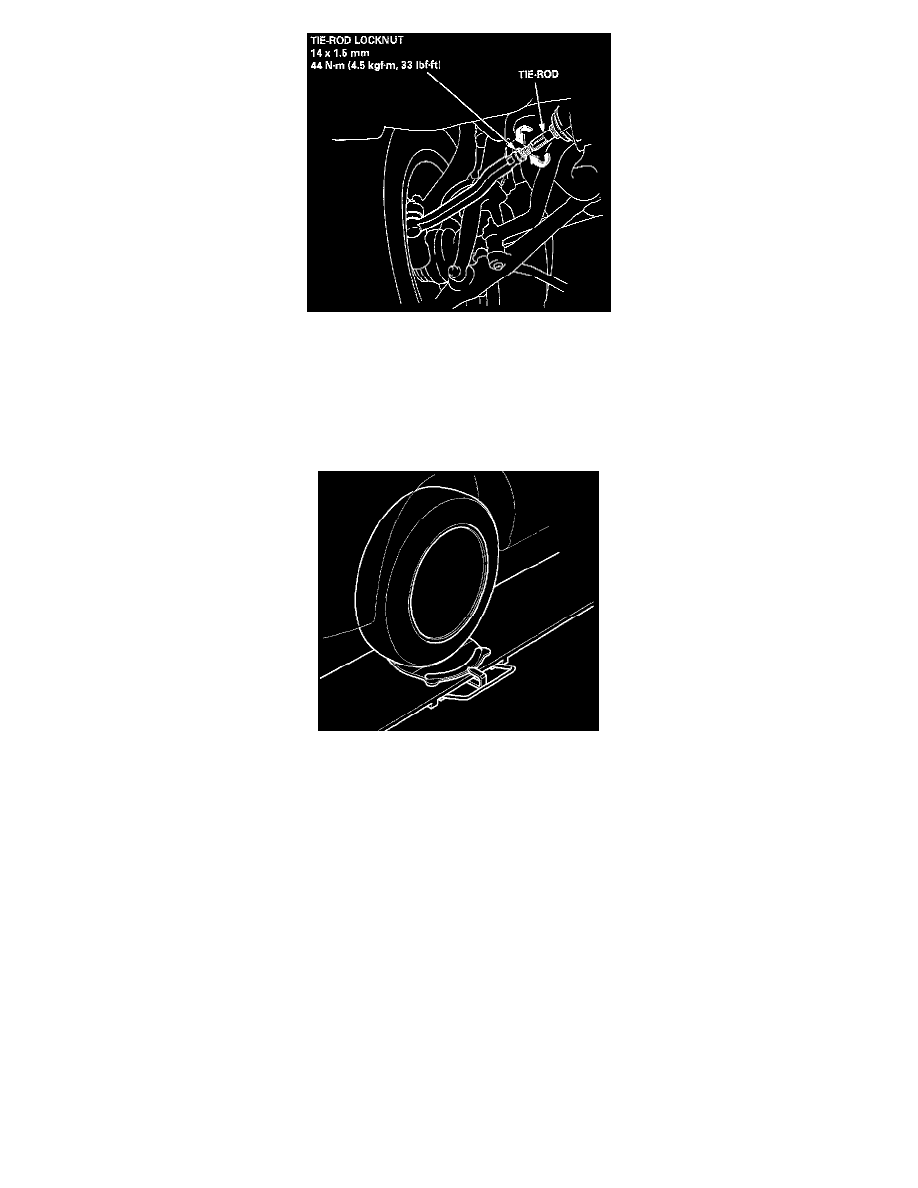Accord SE Coupe L4-2156cc 2.2L SOHC MFI (1997)

6. After adjusting, tighten the tie-rod locknuts.
NOTE: Reposition the tie-rod boot if it is twisted or displaced.
Turning Angle
NOTE: Use commercially-available computerized four wheel alignment equipment to measure wheel alignment (that is, caster, camber, toe, and/or
turning angle). Follow the equipment manufacturer's instructions.
1. Turn the wheel right and left while applying the brake, and measure the turning angle of both wheels. Turning angle:
-
Inward wheel: (39°00' ± 2°) +37° to +42°.
-
Outward wheel: 30°00' (reference)
2. If the turning angle is not within the specifications, check for bent or damaged suspension components.
Camber
NOTE: Use commercially-available computerized four wheel alignment equipment to measure wheel alignment (that is, caster, camber, toe, and/or
turning angle). Follow the equipment manufacturer's instructions.
1. Check the camber angle. Camber angle:
-
Front: (0°00' ± 1°) -1° to +1°
-
Rear: (-0°25' ± 30') -0.92° to +0.09°
2. If out of specification, check for bent or damaged suspension components.
Toe-In
NOTE: Use commercially-available computerized four wheel alignment equipment to measure wheel alignment (that is, caster, camber, toe and/or
turning angle). Follow the equipment manufacturer's instructions.
1. Release parking brake.
NOTE:
-
Measure difference in toe measurements with the wheels pointed straight ahead.
-
If the parking brake is engaged, you may get an incorrect reading. Rear toe-in: (2 ± 2 mm / 0.06 ± 0.06 inch) -0.06 to +0.06 inch.
